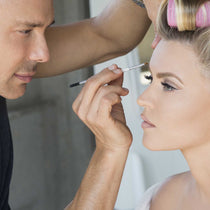Strangles Strikes on the Farm
We have a tough update to share with you – Strangles has made an unwelcome return. This marks our second round with the equine respiratory nightmare. Our recent rescues, Theo and Teddy, fought it off when they first arrived – but this time, the challenge is hitting us much harder!
Stryker's Struggles
 Our alarm bells went off when we noticed Stryker struggling – breathing heavily and running a high fever. These are classic signs of Strangles. We rushed him to our local hospital, Weems & Stephens, where he underwent a tracheostomy for breathing relief and spent two weeks in recovery.
Our alarm bells went off when we noticed Stryker struggling – breathing heavily and running a high fever. These are classic signs of Strangles. We rushed him to our local hospital, Weems & Stephens, where he underwent a tracheostomy for breathing relief and spent two weeks in recovery.
Sanctuary on Lockdown
 Our Weems & Stephens hospital team arrived in 1 day, and every horse and donkey was tested through a Pharyngeal wash, a test to reveal what hid in their nasal passages. Our sanctuary turned into a biosecurity zone with symptom-based areas. Our team tirelessly carried out daily temperature checks, calculated quarantines, and super strict preventive measures like changing clothes between treatments, and using foot bath pans when walking between pastures, to prevent the spread.
Our Weems & Stephens hospital team arrived in 1 day, and every horse and donkey was tested through a Pharyngeal wash, a test to reveal what hid in their nasal passages. Our sanctuary turned into a biosecurity zone with symptom-based areas. Our team tirelessly carried out daily temperature checks, calculated quarantines, and super strict preventive measures like changing clothes between treatments, and using foot bath pans when walking between pastures, to prevent the spread.
We have been doing everything to avoid cross contamination. We have 4 separate groups and moats to ensure no group can touch noses with another. While goats and sheep cannot get Strangles, there is a possibility they could spread it by simply walking across grassy areas where a horse may have coughed, or if they interact with a sick horse and then a healthy horse. Donkeys are less likely to get Strangles AND less likely to show symptoms.
Positive Tests, Puzzling Answers
 Despite our efforts, Strangles breached our defenses. While only two horses tested positive for Strangles, five have started showing symptoms.
Despite our efforts, Strangles breached our defenses. While only two horses tested positive for Strangles, five have started showing symptoms.
We made the decision to place all six of our horses – Piper, Stryker, Foster, Simon, Spirit, and Huck – together in the quarantine area, keeping them separated from the rest of the herd.
Understanding Strangles
| What is Strangles? |
Strangles is an equine upper respiratory disease caused by Streptococcus equi, and it's now on the USDA's watchlist. It's a global headache, impacting younger horses more severely. While survival rates are decent, complications can make it quite challenging to deal with. |
| How do Horses get Strangles? |
Strangles can be transmitted from direct horse-to-horse contact or through more sneaky, indirect ways involving water troughs, feed buckets, and silent carriers. |
| Signs and Symptoms |
Look out for signs like fever, nasty discharges, and throat troubles – early detection is key! |
| Diagnosis of Strangles | Vets may collect samples from abscessed lymph nodes, nasal swabs, and the Pharyngeal wash to uncover Strangles. An endoscope is used to look into the guttural pouch to check for abscesses. Staying updated on diagnostic tech is crucial! |
| Treatment |
In most cases, simple supportive care, including rest in a comfortable, clean environment and easy access to soft, moist food and water, may be the best approach. |
30 Day Countdown
In the next 30 days, our horses will face another round of the Strangles test. No one's leaving the "sick" crew until that test comes back negative. We're aiming for some clarity in December, but for now, it's a simple game plan: hold our breath, deal with the situation, and keep going!












